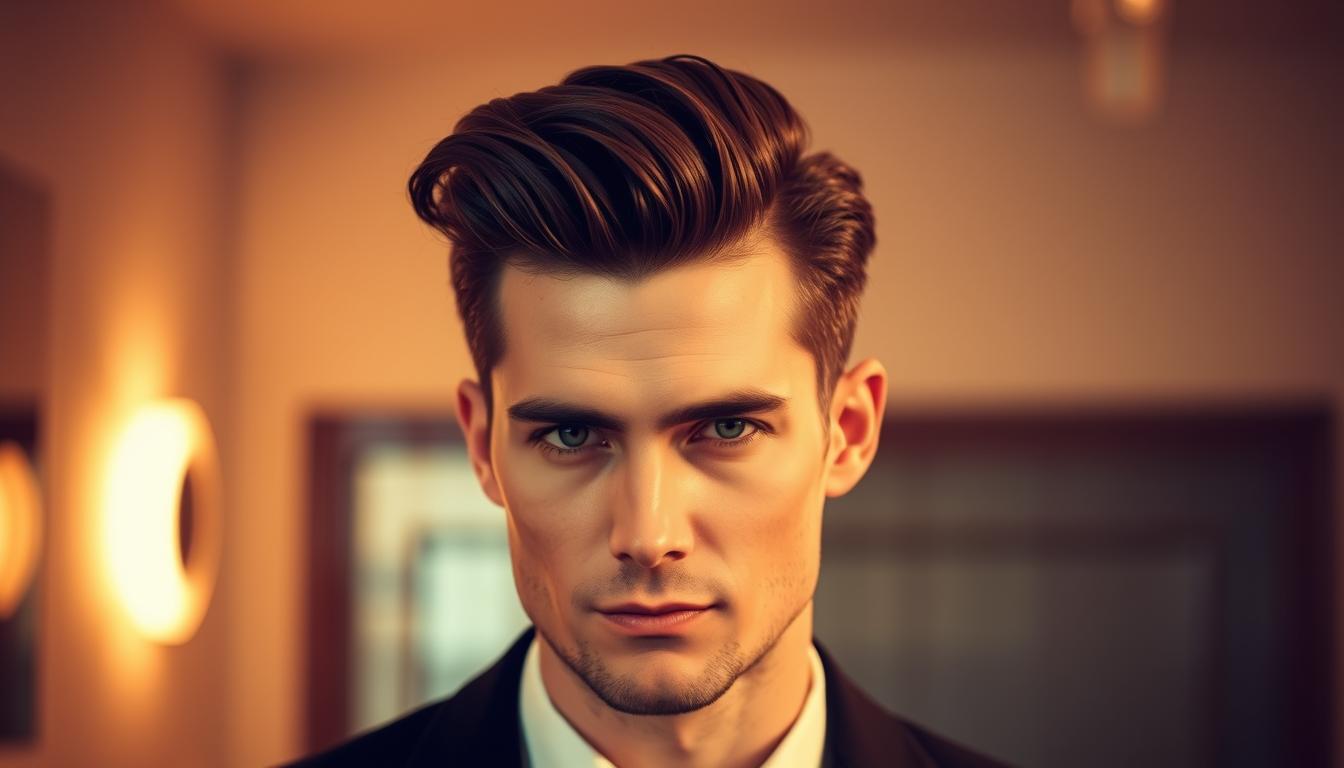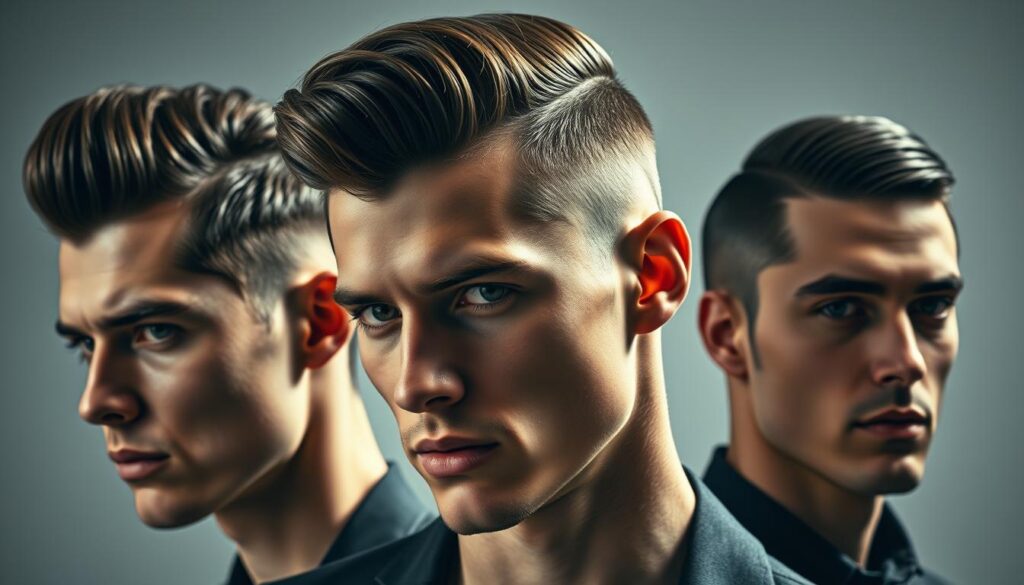
What if your next style choice could channel retro rebellion while feeling utterly contemporary? Imagine a look that whispers “1960s London cool” but screams modern confidence. This isn’t just about trimming split ends—it’s about embracing a cultural statement that’s been reimagined for today’s rule-breakers.
Born in the jazz clubs and fashion hubs of mid-century Britain, this textured aesthetic was crafted by artists and musicians who rejected conformity. Fast-forward six decades, and it’s become the secret weapon for anyone craving effortless edge. The magic lies in its layered structure—choppy enough to feel rebellious, yet polished enough for boardrooms or gallery openings.
From Jacob Elordi’s red-carpet appearances to Paul Mescal’s street-style moments, this versatile cut adapts to personalities like clay. It’s not about chasing trends—it’s about finding that sweet spot where vintage sophistication meets unfiltered self-expression. Whether you’re tousling it for weekend adventures or slicking it back for formal events, the possibilities mirror your mood.
Key Takeaways
- Originated in 1960s London through music and fashion subcultures
- Blends structured layers with intentionally messy texture
- Works for both casual and formal occasions
- Celebrated by style icons across generations
- Requires minimal daily styling effort
- Complements various face shapes and hair types
Defining the Iconic Mod Look

This style began as a secret handshake among British rebels who blended jazz rhythms with razor-sharp tailoring. By the 1960s, it became the uniform for those who wanted to stand out without shouting—sharp enough for club nights, rebellious enough for motorcycle rides.
Historical Origins and Cultural Impact
Born in smoky London jazz clubs, the aesthetic later fueled rock legends. Icons like Paul Weller and Johnny Marr turned their sideburns and textured layers into badges of cool. Their stage presence made the look synonymous with artistic authenticity—a middle finger to bland conformity.
Signature Elements: Fringe, Sides, and Layers
The fringe acts like a frame—cut straight to draw eyes to your features. Sides taper gently, balancing volume up top with clean lines. Layers add movement, creating that “just rolled out of bed” charm perfected by stars like Liam Gallagher.
| Feature | Classic Mod | Modern Twist |
|---|---|---|
| Fringe | Straight, helmet-like | Textured, piece-y |
| Sides | Tapered with sideburns | Blended for versatility |
| Texture | Lived-in shag | Beach-wave tousle |
| Volume | Dome-shaped height | Natural lift |
Barbers achieve this using thinning shears and strategic point-cutting. The result? A shape that looks equally at home under a beanie or styled with matte paste.
Exploring Different Mod Haircuts for Men

Creative reinvention defines today’s take on this iconic style. While staying true to its roots, modern barbers have expanded the possibilities with fresh textures and personalized twists.
From Classic 60s Mod to Modern Adaptations
The original classic 60s mod remains a blueprint – cropped sides frame a voluminous crown with fringe grazing the eyebrows. Contemporary versions soften the contrast, blending tapered sides into tousled layers. For those craving boldness, the mod mullet combines business-like fronts with party-ready lengths at the neck.
Beard enthusiasts can pair textured tops with precisely trimmed facial hair. The wolfy mod variation adds rugged charm through disconnected layers and natural movement. These updates maintain the cut’s rebellious spirit while adapting to current grooming preferences.
Visual Inspirations and Trend Variations
Runway shows and street style highlight three dominant directions:
- Retro Revival: Crisp side parts with matte finishes
- Urban Texture: Choppy ends creating lived-in dimension
- Hybrid Edge: Undercut bases supporting wavy crowns
Celebrity stylists often use sea salt sprays to enhance natural waves. For straighter hair, lightweight clays build definition without stiffness. The key lies in balancing structure with effortless flow – a hallmark of all great modern mod executions.
Essential Features of a mod haircut men
Ever wondered how one style can flatter both angular jawlines and rounded features? The secret lies in its adaptable blueprint. This cut thrives on tailored adjustments, blending structured elements with personalized touches to enhance your natural assets.
Key Style Components to Ask Your Barber
Start by requesting textured length on top – think 2-4 inches for optimal versatility. Specify choppy layers through the crown to create movement without sacrificing structure. For the fringe, aim for brow-grazing length with wispy separation rather than blunt lines.
Sideburn emphasis anchors the look. Ask for gradual tapering from temple to earlobe, keeping them distinct but not sharp. Use phrases like “keep weight around the back” to maintain that signature silhouette while allowing natural flow.
Customization for Your Face Shape and Hair Type
Oval faces shine with balanced volume across the crown and sides. Square jawlines benefit from softer layers that graze the cheekbones. If your hair grows straight, your stylist might suggest razor-cutting for piece-y texture. Wavy or curly types? Embrace air-dried definition with light-hold creams.
Thick strands create dynamic contrast when layered, while fine hair needs careful texturizing to avoid flatness. Bring photos showing your ideal fringe length and sideburn shape – visual references prevent miscommunication.
Styling, Maintenance, and Product Recommendations
The true magic of this iconic style lies in how you bring it to life daily. “Great texture comes from understanding your hair’s natural flow,” says celebrity stylist Marcus Troy. Start with clean, towel-dried strands—this blank canvas lets products work their best without residue interference.
Choosing the Right Hair Products
For piece-y separation, rub a dime-sized amount of styling clay between palms before scrunching into damp strands. Those with waves should opt for curl-enhancing cream, while straight-haired individuals benefit from lightweight mousse at the roots. Pro tip: Matte finishes hide greasiness better than shiny alternatives.
Step-by-Step Styling Techniques for Natural Look
Blow-dry using a round brush, lifting sections upward for volume. Cool-shot the airflow to set the shape. For messy texture, twist random crown sections while drying. Finish by raking fingers through layers top to break up uniformity.
Ongoing Grooming and Maintenance Tips
Visit your barber every 6 weeks to maintain sharp lines. Between cuts, trim stray neck hairs with grooming clippers. At home, use texturizing spray on day-old hair—its clay formula absorbs oils while refreshing movement. Sleep on silk pillowcases to reduce morning frizz.
Conclusion
Your journey through style evolution finds its perfect companion in this timeless cut. Whether you lean toward bold contrasts with shorter layers or prefer flowing lengths that whisper sophistication, this style molds to your personality like musical notes to a melody.
What began as underground rebellion now thrives as a universal language of self-expression. Thick waves gain definition through strategic texturing, while straight hair achieves effortless volume with blended graduation. Your face shape becomes the canvas – angular features softened by curtain fringes, rounder contours balanced with tapered sideburns.
This isn’t just about looking sharp. It’s about joining generations who value craftsmanship over fleeting trends. A quick tousle with matte paste or polished finish with lightweight gel – both honor the cut’s heritage while reflecting your daily rhythm.
Armed with styling insights and maintenance know-how, you’re ready to collaborate with any skilled stylist. The mirror now reflects more than a look – it reveals a legacy reinvented through your unique lens.
